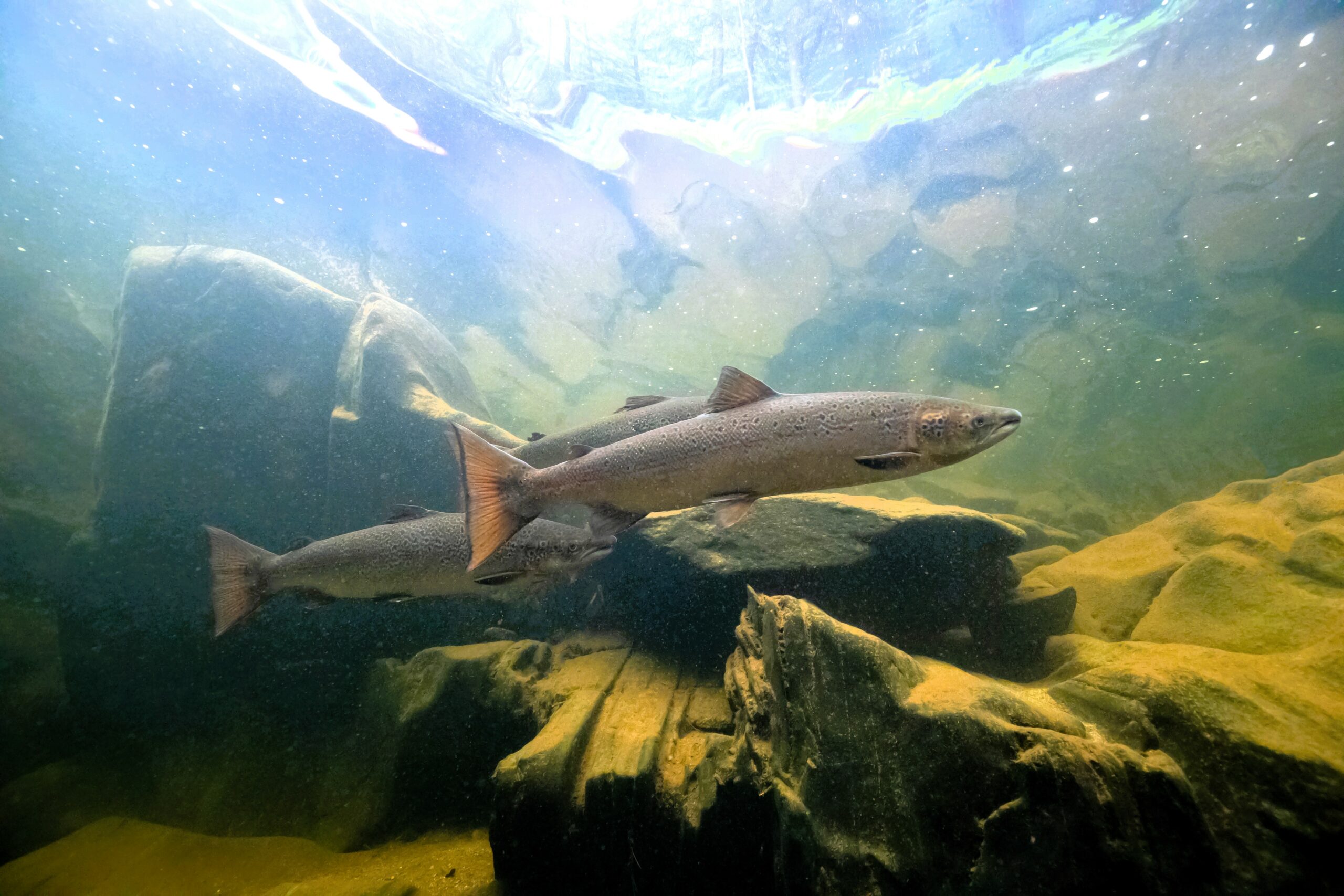
Subscribe & stay up-to-date with ASF

In the heart of Maine lies the Kennebec River, a waterway steeped in history and teeming with potential. History was made on the Kennebec in 1999 when the Edwards Dam was removed, kicking-off a massive ecological recovery in the lower river. The Kennebec has experienced a dramatic resurgence in sea-run fisheries, wildlife, water quality, and economic opportunity that has influenced and inspired dam removal efforts across the planet.
However, this remarkable restoration success has been prevented from continuing further upriver due to the presence of four other dams situated between the communities of Waterville and Skowhegan. Now is our only opportunity to address those dams and usher in a new era of vitality for the entire ecosystem by fully reconnecting the Kennebec from the headwaters of the Sandy River in the Western Maine mountains to the Atlantic Ocean.
While the path to river restoration is clear, significant challenges lie ahead. The fish passage proposals outlined in the Draft Environmental Impact Statement (EIS) that was released earlier this month have not worked anywhere else in the world, and there is no evidence they’ll work on the Kennebec. Access to the upper river is essential for the recovery of Atlantic salmon to ensure the species will continue to exist in the United States. No river in the US or Canada supports wild runs of Atlantic salmon or other anadromous fish upstream of four dams. Dams need to be removed to restore salmon and other native fish species.
Addressing the complex issues surrounding river restoration requires a unified effort from all stakeholders. FERC needs to get all stakeholders to the table and work together on a solution that works for the river, for the fish, and for the people and businesses along the river. Drawing inspiration from successful models on rivers like the Penobscot and Klamath, we must come together to chart a course forward that ensures a thriving future for the Kennebec.
To achieve meaningful progress, we need some technical improvements included in the EIS. Recommendations include enhanced eel protection measures and the implementation of two upstream fish lifts at each dam, and strong performance standards for all species and a requirement to meet them within two years of any fish passage construction. By setting clear performance benchmarks and enforcing accountability, we can pave the way for tangible results and lasting impact.
As we stand at this crossroads in the history of the Kennebec River, the choices we make today will resonate for generations to come. By embracing the lessons of the past, confronting the challenges of the present, and forging a path of collaboration and innovation, we can realize a future where the Kennebec flows freely, its waters teeming with life, and its shores bustling with prosperity. The time to act is now — let us seize this moment and embark on a journey toward a brighter, more sustainable tomorrow.
We need to make our voices heard. We urge everyone to write to FERC with their concerns about the Draft EIS and the future of the Kennebec River. Let your voice be counted in this crucial decision-making process. Write to FERC with your concerns here.
We are urging concerned citizens to attend one or both of the public meetings. The dates and times of the public meetings are listed below.
Evening Meeting
Date: Tuesday, May 21, 2024
Time: 7:00 P.M. to 9:00 P.M. EST
Location:
Thomas College
Summit Room
180 West River Road
Waterville, Maine 04901
Daytime Meeting
Date: Wednesday, May 22, 2024
Time: 10:00 A.M. to 12:00 P.M. EST
Location:
Augusta Civic Center
Fort Western, Arnold, and Howard Rooms
76 Community Drive
Augusta, Maine 04330